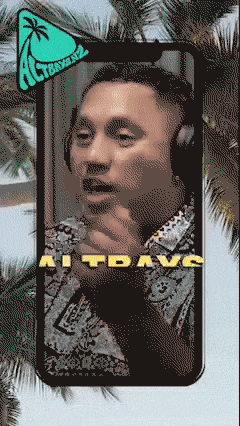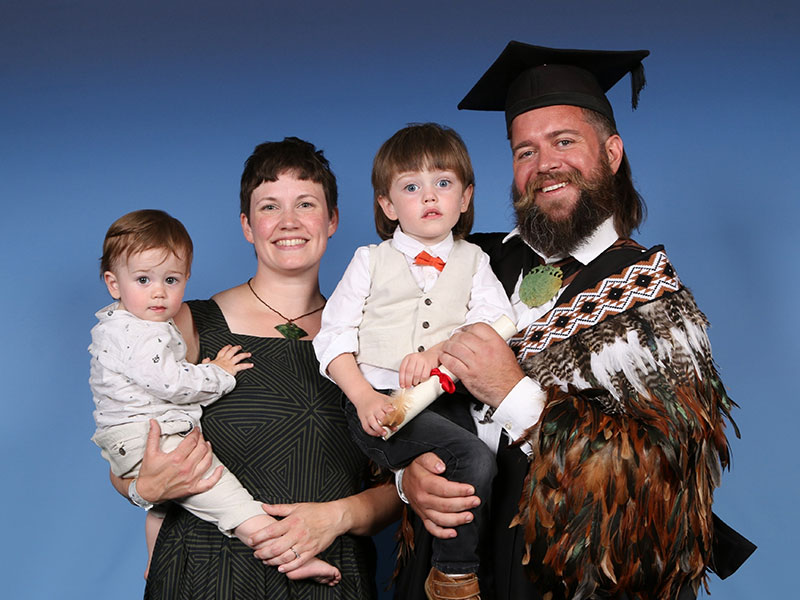
Ahuahu & Andy Series – A Post-Eradication Shakedown – Brought to you by Windborne Charters
Rats eat seeds, bugs, larvae, eggs, whatever is easiest at the time. With rats gone, a boom-bust population relay cycled around Ahuahu / Great Mercury Island. Bumblebee larvae from nests in the ground were no longer gorged on by rats, leaving the bumblebee population to explode; likewise spiders, with seamless cobweb carpets on the ground and tunnel webs in the swampy wetlands and bush, plus ground wētā (giant native crickets) on the forest floor – all things we hope for to support a kiwi population in future years.

Because of the bug boom, birds boomed next, with so many bugs to feed on and nest eggs safe from rats, chicks were fledging freely from nests and the birds exploded. Grassland birds flocked in huge waves foraging across the pasture on the farm; kingfishers nested in holes in the banks; tūī, bellbirds, kākā, kākāriki (local birds) in the forest, pūkeko (swamp hens) in the swamps (a topic for another time) – all flourished. Pāteke (brown ducks) formed defensive circles in pockets of swamp to protect themselves from the overwhelming pūkeko numbers and ventured up small creeks on the edges of the forest.
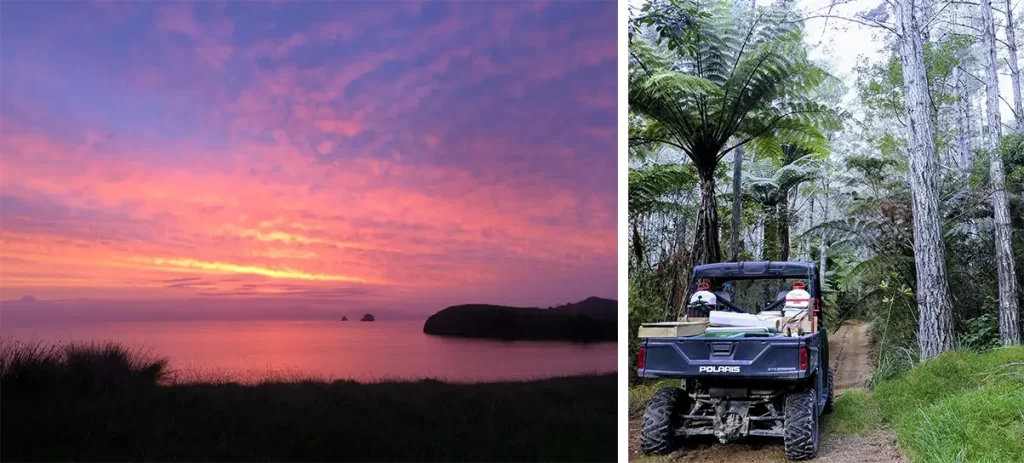
Morepork (small native owls) nested on the ground under brown ponga (tree-fern) cloaks and in the daytime could be seen sitting way up high on headless ponga trunks looking like cloaked Māori elders in the misty dull light of the forest.
Caspian terns owned the upper Huruhi Harbour and ventured out across the Long Beach tombolo, a natural sand isthmus; nearby one bittern lurked, aloof on a pond full of frogs. Dotterel made nests far back from the beaches into the dunes and paddocks, unlike on the mainland where they are forced into habitat on the high tide line, the very limit of land which is itself under pressure from intensive human activity.
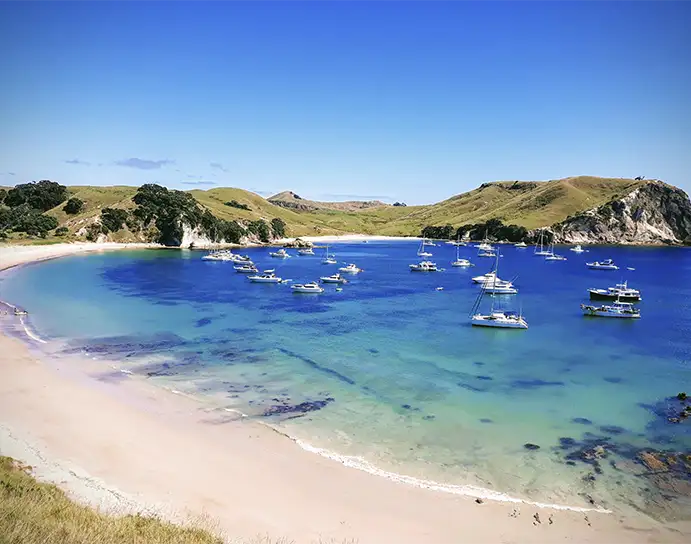
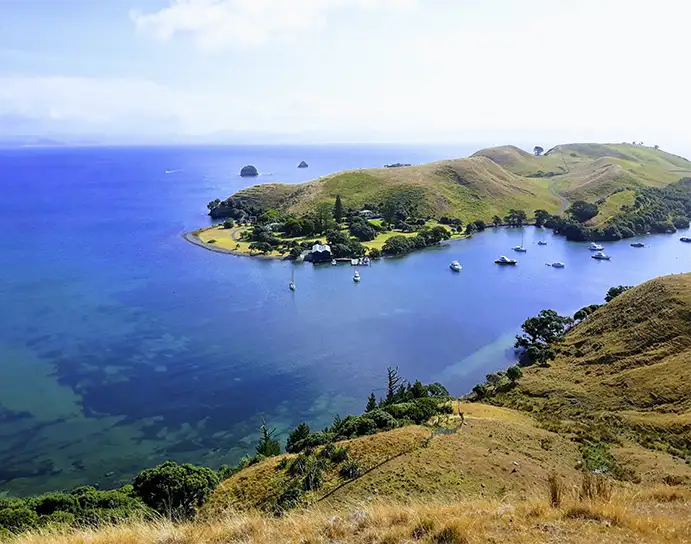
The exploding birdlife around the forests and fringes consumed more seeds and dispersed them in flight around pockets of terrain, creating a big surge in sapling tree growth after a few years, emerging across the many landscapes.
The landscape was changing rapidly, reverting to a better balance. The island had been left to shake itself down post eradication for the first five years in a boom-bust sequence, including pūkeko. The kākāriki (red-crowned parakeet) population I knew of grew from two or three commonly seen birds, usually in flight or hearing them calling from a tree in one area while monitoring traps.
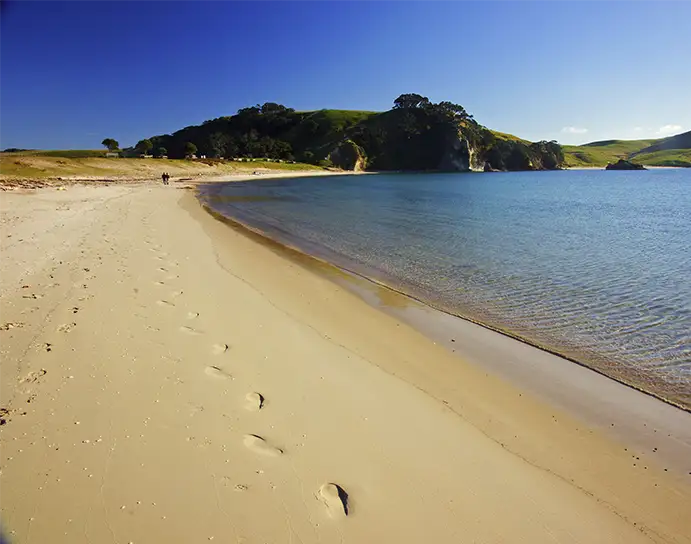
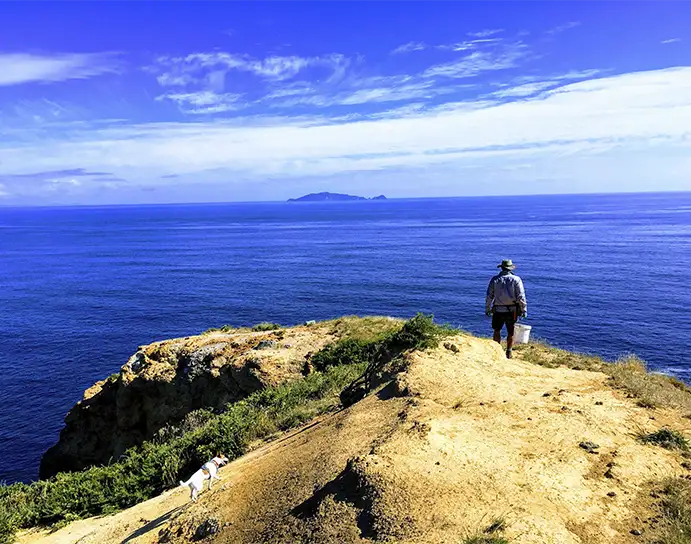
After a few years, three kākāriki became six, eight; then I began seeing them in other places and then widespread across the island, flying corridor to corridor as far as the very northern tip of the island, barren and windy, the closest point to Cuvier Island.
The northern half of Great Mercury Island has native tree corridors thanks to Libby Richwhite, who insisted on farmland in gullies being retired and planted in many thousands of native trees (over 600,000 in total). Libby’s vision and passion for restoration many years ago established corridors, an opportunity to create a very broad habitat across the more barren northern half of the island which was essential for the pathways of birds in flight.
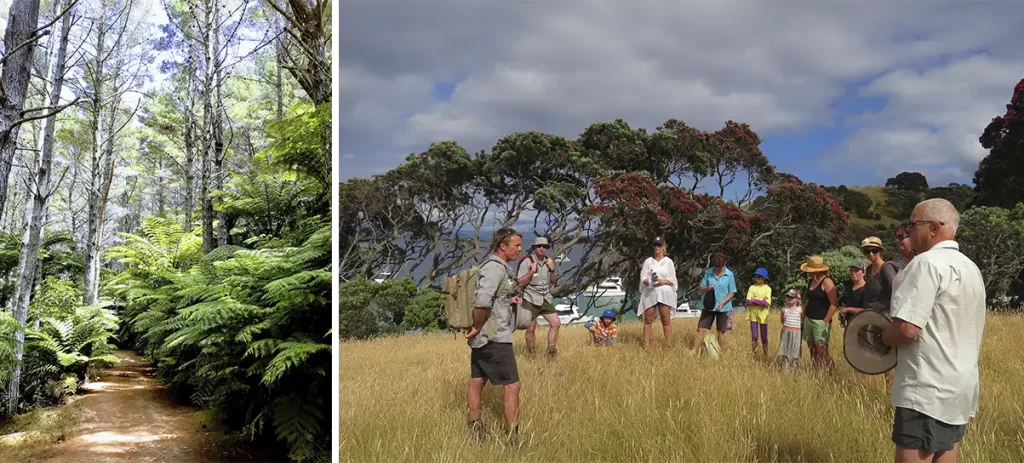
Interestingly the kākāriki I was seeing initially were off the ground in a tree or in flight. Over time, I saw them more often reverted to their instinctive ground foraging, under thick grass matting and bending grass stems over to feed on seed heads as you might see a parakeet do in a cage, standing on the floor looking up at a seed head hanging there for it to feed from.

This behavioural change was because it was safe for them to do so because of the lack of predators.
Many New Zealand birds really do prefer to be on the ground, given a chance. Kākāriki began to migrate back and forth from the other Mercury Islands and gradually they stayed on Great Mercury Island longer and longer, because it was safe for them to forage a new abundant food source; these birds could breed with confidence, they could fledge more than one or two clutches in a season.
Words by Andy Hopping
Coromind: Coromandel’s Collaborative Magazine

Help us take Coromind Magazine to new heights by becoming a member. Click here
Change the Weather for Your Business: Advertise with Us.
Advertise your business in the whole Hauraki Coromandel in the coolest Coromandel Art Magazine, from Waihi Beach/Paeroa /Thames up to the Great Barrier Island.
Advertise Smarter, Not Harder: Get in Touch


